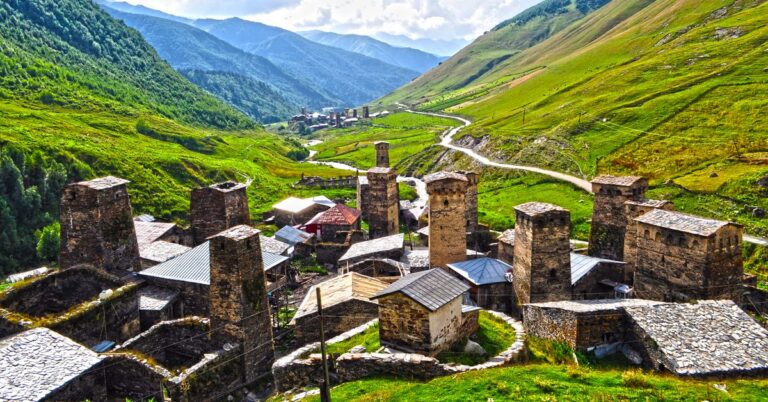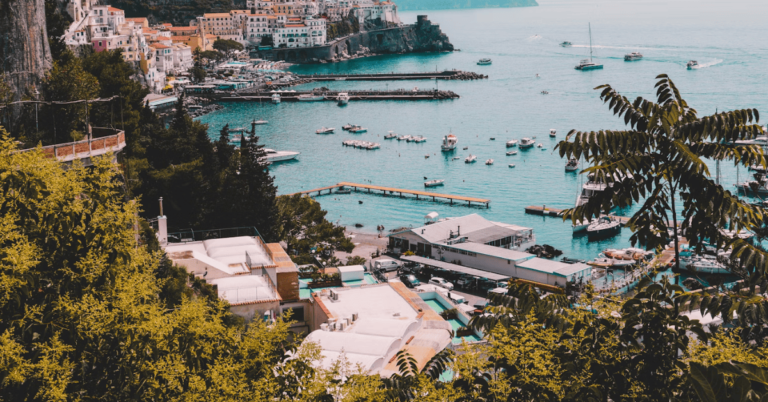Germany’s 25 Most Scenic Castles Worth The Journey

In parts of Germany, glimpses of stone towers above misty hills feel almost unreal. Forests curl around moated fortresses, and winding paths lead to places that seem pulled from imagination. Centuries of charm still linger behind ancient walls. Here are 25 castles to explore that seem straight out of a fairytale setting.
Neuschwanstein Castle, Bavaria

Turrets pierce the sky as forests surround the hilltop—it is easy to see why this castle inspired Disney’s fairy kingdom. Built by Ludwig II in the 1800s, it was meant as a retreat, not a fortress. Visitors today walk through halls devoted to operas, myths, and grand romantic gestures.
Hohenzollern Castle, Baden-Wurttemberg

Spires and steep structures rise into the mist on Mount Hohenzollern. This 19th-century version honors a long regal lineage tied to German emperors. Inside, there are more than just paintings and armor—there is a royal crown, too. On clear days, the view reaches deep into the Swabian countryside.
Marksburg Castle, Rhineland-Palatinate

One of the few Rhine castles that avoided destruction, Marksburg remains fully intact since the 13th century. High above the river, its white tower and steep ramparts give it a classic storybook profile. Interior tours lead through stone passages once used by knights and guards, with the fortress cut directly into the mountain rock.
Marienburg Castle, Lower Saxony
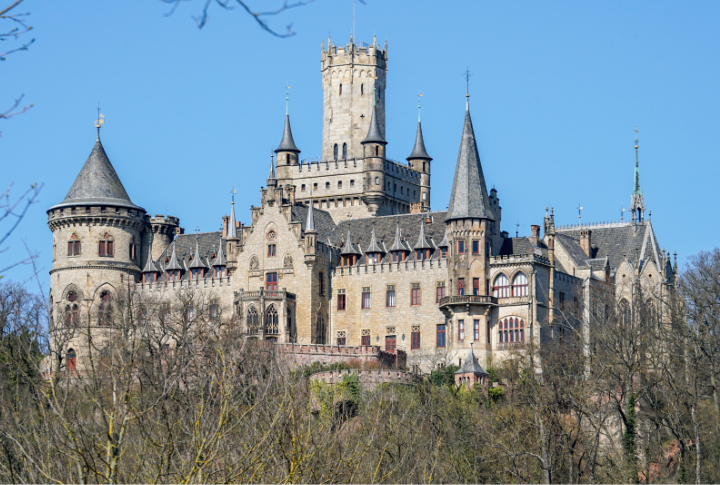
A grand gift from a king to his queen, Marienburg, stands on a ridge overlooking the Leine Valley. Construction finished in the 19th century, but its pointed turrets and grand chambers often fool visitors. Gothic Revival flourishes hide secret passages, soaring ceilings, and one of Germany’s best-preserved royal libraries.
Burg Eltz, Rhineland-Palatinate
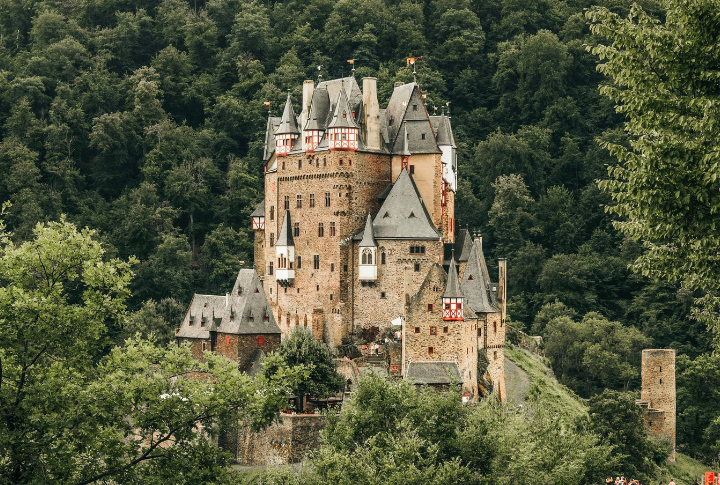
This medieval stronghold, owned by the same family for over 30 generations, hides in a forested valley. Unlike most castles, it survived battles untouched. Walkways link towers like a maze, and each section belongs to a different branch of the same family. Inside, 15th-century beds and armaments still sit in their original spots.
Heidelberg Castle, Baden-Wurttemberg
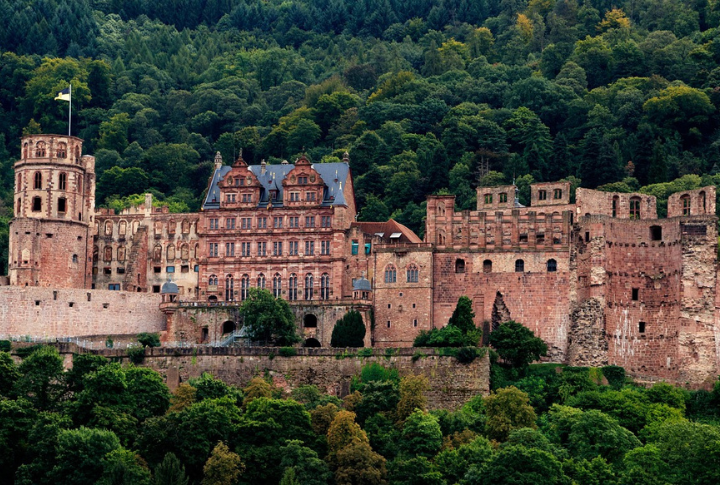
Once a regal residence, this half-ruined beauty looms above a charming university town. Its Renaissance details stand out against the red sandstone. Lightning strikes and neglect did not erase its elegance. Locals consider it the birthplace of German Romanticism, and tourists love the barrel room big enough to dance in.
Lichtenstein Castle, Baden-Wurttemberg
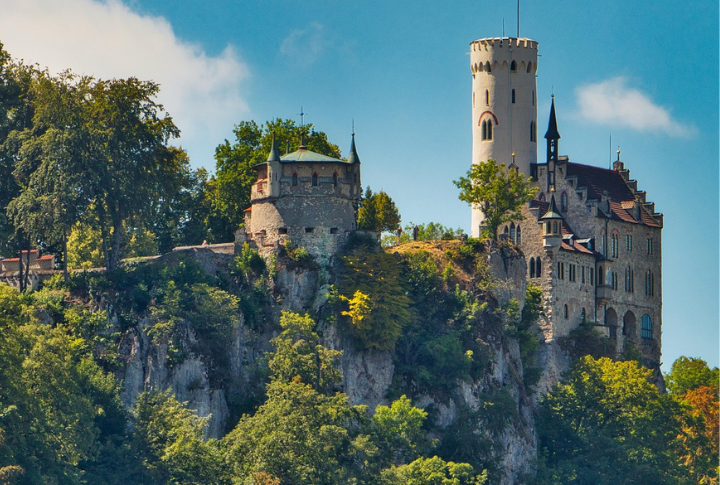
Inspired by fiction and built on fantasy, this cliff-hugging castle is based on a 19th-century novel. Its narrow drawbridge and neo-Gothic flair make it feel more story than structure. Though newer than others, it leans hard into theatrical charm, with pointed structures rising along the edge of the Echaz Valley.
Burghausen Castle, Bavaria
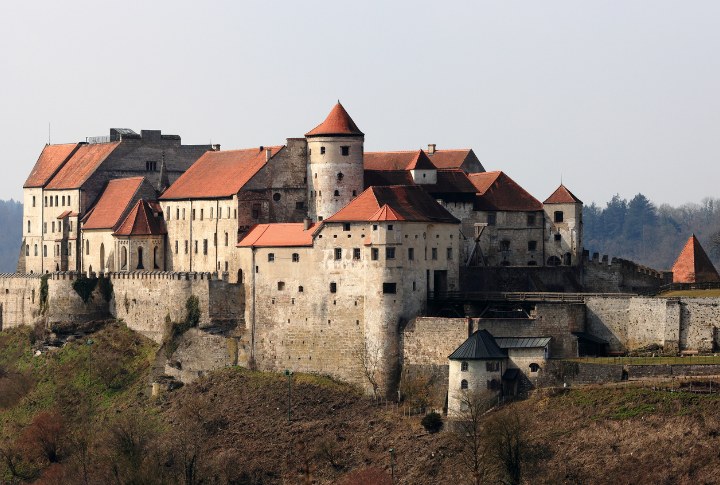
Recognized by Guinness for its length, the hilltop stronghold stretches over half a mile. Designed initially to guard the Salzach River trade, it now houses museums and art galleries. Six courtyards connect buildings spread across the long ridge. Views of Austria peek through arrow slits, and stone corridors echo with centuries of footsteps.
Charlottenburg Palace, Berlin
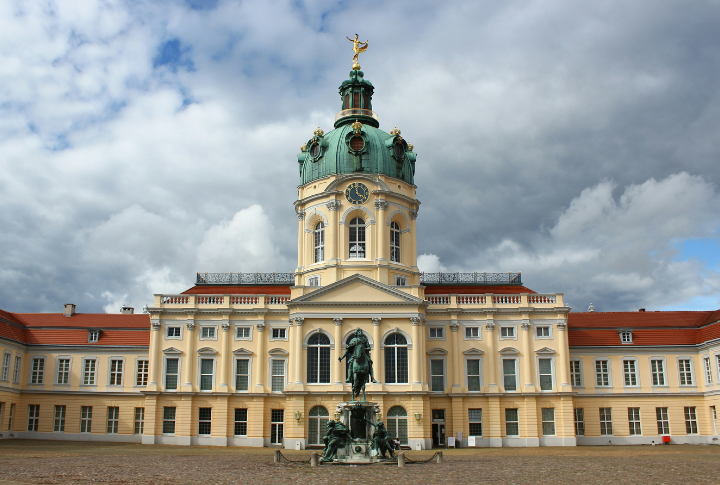
Opulence replaces stone at Berlin’s largest surviving royal residence. Commissioned in the late 1600s for Queen Sophie Charlotte, the palace blends Baroque and Rococo elegance. Golden halls, mirrored galleries, a porcelain chamber, and richly painted ceilings show Prussian luxury. Manicured gardens stretch behind it, where fountains whisper beside carefully sculpted hedges.
Schwerin Castle, Mecklenburg-Vorpommern
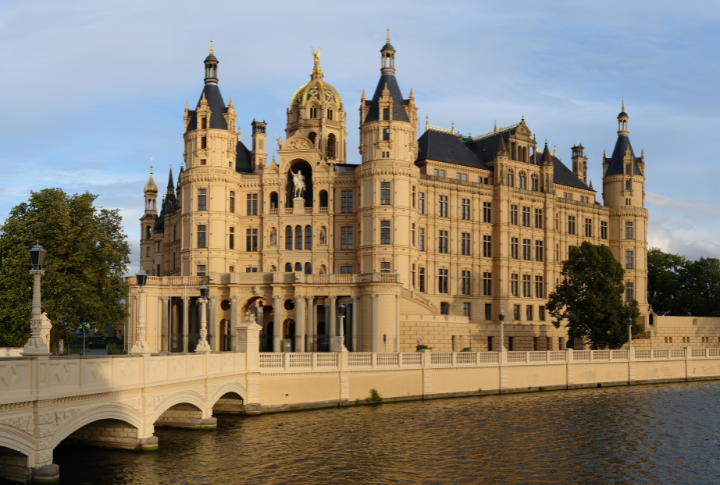
Graceful spires appear to hover beside the still waters of Lake Schwerin. Once home to dukes and duchesses, the castle now hosts the state parliament. Locals still talk about Petermannchen, a mischievous resident ghost. The entire setting feels quietly enchanted with forest all around and water at its feet.
Ludwigstein Castle, Hesse
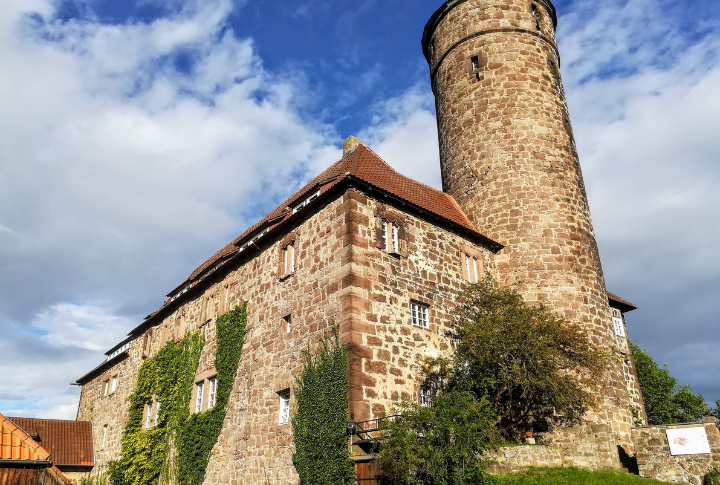
Constructed during the 15th century and later tied to Germany’s youth movement, Ludwigstein stands on a hill near the Werra River. Damaged during conflict and restored with community help, the castle now serves as a cultural hub. Old stone walls hold exhibitions, workshops, archived letters, and stories that stretch beyond borders.
Cochem Castle, Rhineland-Palatinate
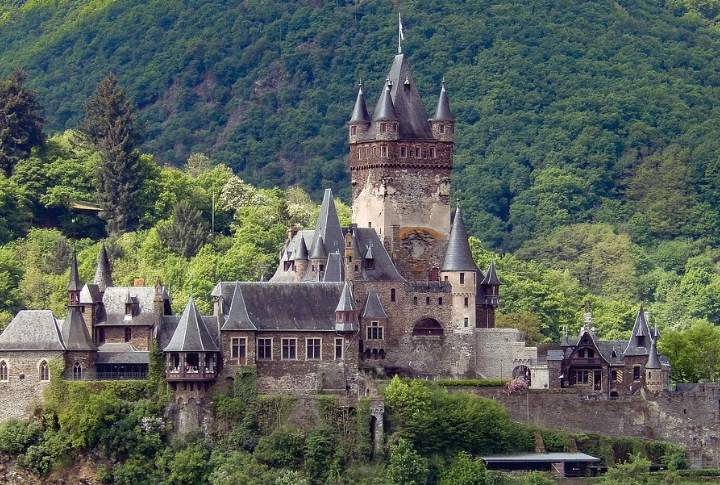
Above the vineyards of the Moselle River, this rebuilt castle looks ready for a fantasy film set. Destroyed initially by French forces in the 1600s, it rose again in a romantic 19th-century style. Visitors can join medieval-style dinners or stroll beneath towers, peering over half-timbered houses.
Hohenschwangau Castle, Bavaria

Bright murals cover the interior walls of King Ludwig II’s childhood home. It was built atop older ruins and served as the aristocratic family’s summer retreat. Each room tells a different story from Germanic legends, while alpine lakes and swans complete the idyllic surroundings.
Wernigerode Castle, Saxony-Anhalt
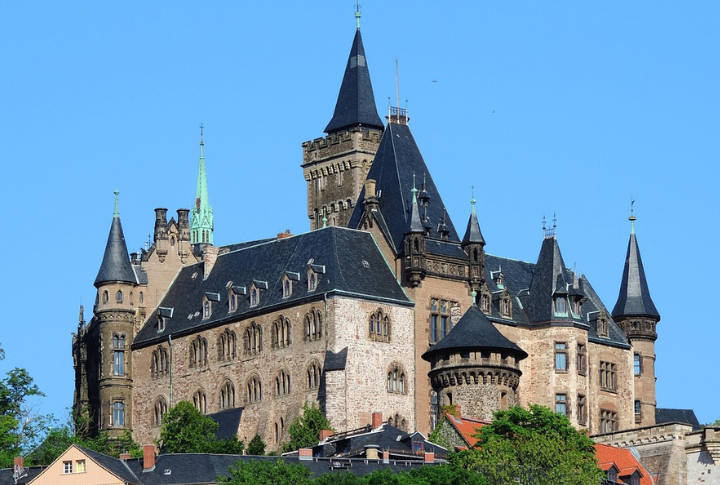
Gothic curves meet Baroque flair at this hilltop residence. Originally a fortress, it morphed into a grand estate in the 1800s. The furniture and art inside reflect the 19th-century noble life, while the Harz Mountains form a moody backdrop outside. A small train makes the steep climb easier for visitors.
Mespelbrunn Castle, Bavaria
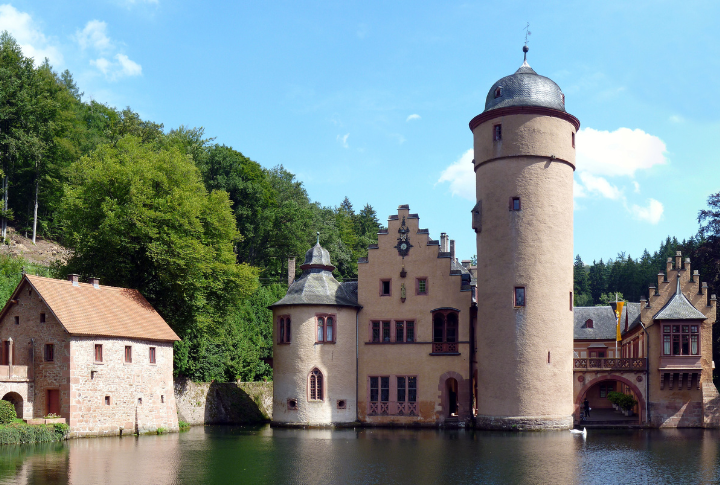
Water surrounds this peaceful, privately owned retreat deep in the forest. Dating back to the early 1400s, it has remained untouched by conflict thanks to its hidden location. Reflections on the moat give it a dreamy symmetry. Guided tours cover its legends and introduce guests to generations of one noble family.
Wartburg Castle, Thuringia
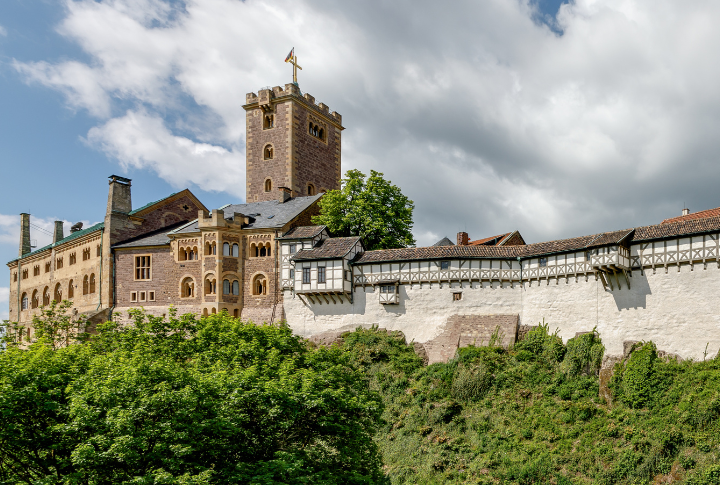
Martin Luther did not just hide here—he translated the Bible while disguised as a knight. This UNESCO-listed site, established in the 11th century, blends history with myth. Legends of saintly princesses and singing contests add flair to its scholarly reputation. The view from the ramparts is pure drama.
Drachenburg Castle, North Rhine-Westphalia
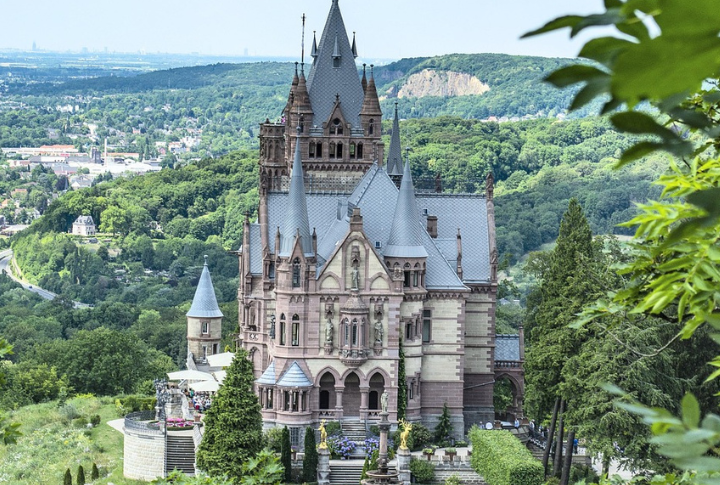
A wealthy banker’s fantasy became a reality in the late 1800s on a hill above the Rhine. Though styled as a medieval castle, it is a private villa adorned with Gothic flair. Colorful interiors, balconies, and frescoes offer a fairytale setting with a touch of theatrical exaggeration.
Sigmaringen Castle, Baden-Wurttemberg
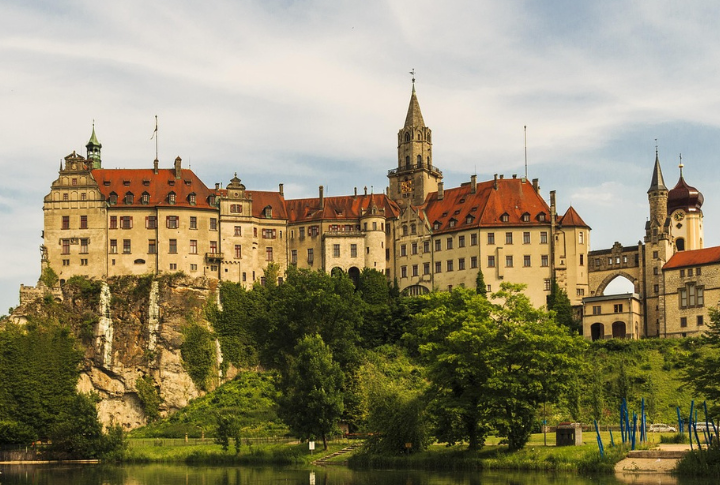
Sharp spires and long facades stretch across a cliff overlooking the Danube. Long associated with the Hohenzollern-Sigmaringen family, the castle mixes medieval roots with baroque grandeur. Its knight’s hall and artillery collection bring noble life vividly into focus. The view down the river valley is unforgettable.
Albrechtsburg Castle, Saxony
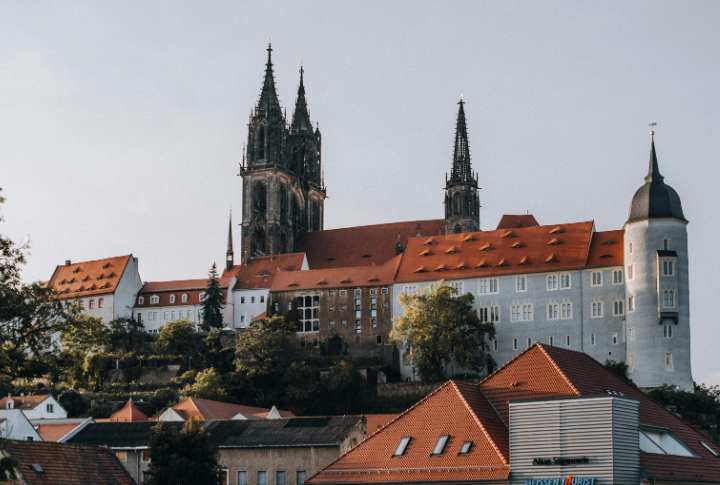
Seen as Germany’s first residential castle, this late Gothic structure perches over Meissen. Instead of sieges, it is known for porcelain—Europe’s first hard-paste factory began here. Sculpted vaults and spiral staircases feel fancy, but the porcelain museum draws the crowds today.
Glucksburg Castle, Schleswig-Holstein

Renaissance elegance meets quiet reflection here. Constructed by a duke in the 1500s, the white walls shimmer on a calm moat. Danish royalty traces its roots to this castle, one of the north’s best-preserved residences. Portraits and tapestries across the rooms create a stately but cozy vibe.
Lowenburg Castle, Hesse
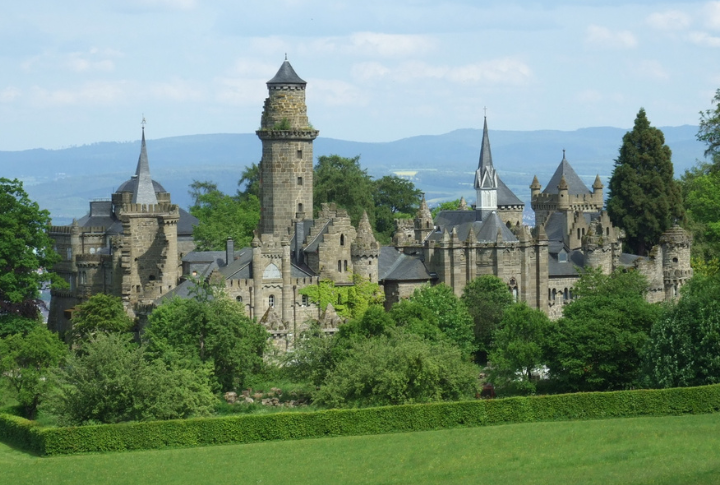
This whimsical castle, deliberately designed to look like a ruin, was finished in the late 1700s. Set in a massive park in Kassel, it is part theater, part feudal tribute. Gothic halls and displays of knights’ armor await beyond the entrance. Outside, the scene sets the tone for a fantasy adventure.
Reichsburg Coburg, Bavaria
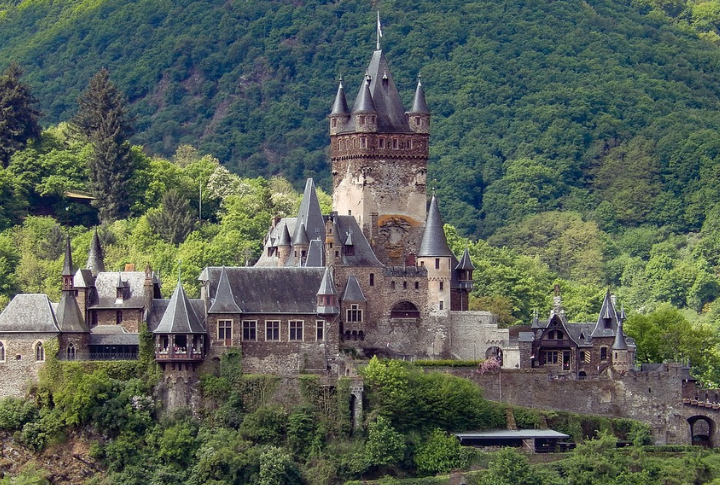
Stone structures sprawl across a hilltop overlooking Coburg’s old town. This fortress was used to shelter Martin Luther and later served as an imperial residence. Coburg art collection includes ancient armor, historic furnishings, ceremonial artifacts, and decorative sculptures. Forest paths wind through its outer defenses, where old fortifications overlook the valley.
Altena Castle, North Rhine-Westphalia
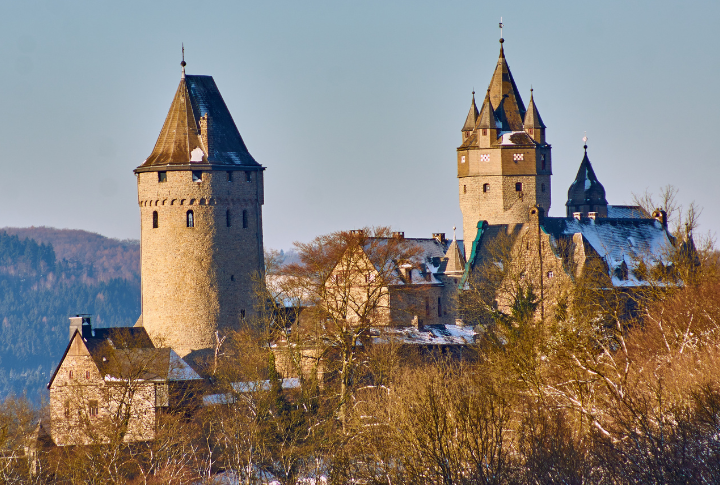
It is not just old—it is innovative. This hilltop fortress, opened in 1914, houses the world’s first youth hostel. That legacy continues alongside exhibits on medieval armor and castle life. Narrow stairways, winding halls, stone towers, and arched doorways give it a grounded, lived-in feel rather than polished perfection.
Moritzburg Castle, Saxony
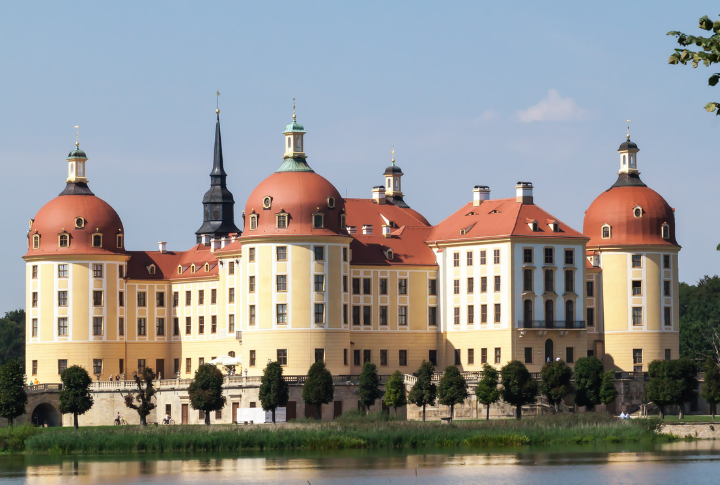
Symmetry reigns at this former hunting lodge surrounded by forest and water. Tourists recognize it from a beloved Christmas film, but the place predates movie magic. Lavish hunting trophies and a massive feather bed tell stories of excess within its richly decorated rooms. In winter, frozen lakes encompass the castle in a scene straight from a snow globe.
Nuremberg Castle, Bavaria

Thick walls once protected kings during the Holy Roman Empire. Today, the castle rises over the old town, housing relics and royal chambers tied to its imperial past. Its sturdy design and history of imperial diets reflect serious power, but the climb to the top also delivers a fun workout.

